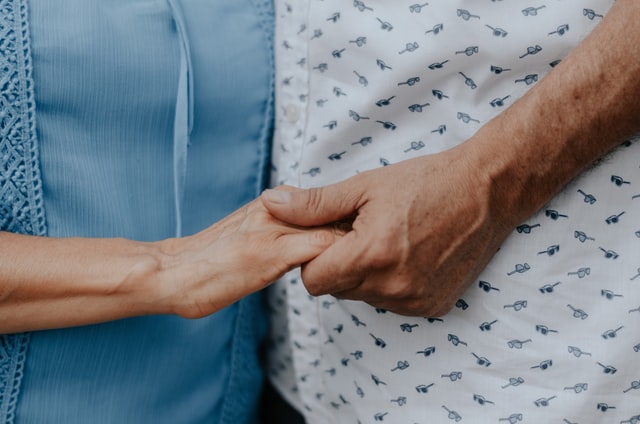Overview
An orgasm is a feeling of intense sexual pleasure when you reach the climax, or peak of sexual excitement. It usually happens when you masturbate or have sex of any type – including oral, anal or vaginal sex.
In particularly sensitive people, kissing or playing with certain body parts other than your genitals (like your ears, nipples or neck) can also bring on an orgasm.
What does an orgasm feel like?
Having an orgasm is sometimes known as coming or climaxing, and it feels different to different people. Your experience of having an orgasm can also vary – sometimes it may feel very strong and at other times, you won’t feel it as much, or have one at all. This usually depends on how sexually aroused you are, how comfortable you feel at the time, and how much sexual tension you had before you had an orgasm.
When you climax, you’re likely to notice some physical changes, including your heart rate and breathing getting faster and the muscles in your vagina or penis – and your bottom (anus) – suddenly tightening for a few seconds.
You usually feel a lot of pleasure in your genitals and throughout your body, because the nerves that cause these muscle contractions send messages of pleasure to your brain and endorphins (known as the ‘feel-good’ hormones) are released into your bloodstream.
You’ll also feel a release of the muscle and sexual tension that had built up as you got closer to an orgasm.
What does a male orgasm feel like?
If you have a penis, you usually have orgasms when your penis, testicles and/or bottom are stimulated.
The strong muscle contractions you feel in and around your penis when you have an orgasm usually cause the release of a small amount of semen, or cum (a mix of sperm and whitish liquid) from your erect penis – this is called ejaculating. Your orgasm will last from just before you ejaculate until the last semen comes out of your penis.
You can orgasm without ejaculating, and you can ejaculate without orgasming, but they usually happen at the same time.
If you have a penis, you usually won’t be able to have an orgasm again straight after you’ve ejaculated – you’ll need to wait a while so that you can recover. And as you get older, you’ll need more time to recover between orgasms.
Read more about the physical signs of male arousal and oral sex.
What does a female orgasm feel like?
You usually have orgasms when your vagina, clitoris (a small, soft bump in front of the entrance to your vagina), and/or bottom are stimulated.
When you climax, you’ll feel contractions in your vagina, uterus, pelvic floor muscles and bottom, and your vagina will get wet. Usually these muscle contractions will last longer than they do if you have a penis.
For some, an orgasm may cause female ejaculation, or ‘squirting’, but this is less common than ejaculation from a penis. If it happens, a clear fluid comes out of a pair of glands (called Skene’s glands) in your vulva, but this fluid isn’t pee.
Unlike people with a penis, it’s possible for you to have another orgasm soon after the first one if you or your partner keeps on stimulating your genitals.
Discover more about the physical signs of female arousal and female masturbation.
What are the different types of orgasms?
There are many ways to trigger an orgasm, and it’s sometimes claimed that there are up to 24 different types of orgasm. But as different sexual health experts define types of orgasms differently, there isn’t a definitive list. Here are some of them:
- tension orgasms – the most common orgasm happens when, for example, your clitoris, penis, vagina, bottom (anus) or prostate are stimulated, your body and muscles usually tense up and you reach orgasm. Read more about anal sex
- multiple orgasms – when you have a series of orgasms in a short period of time
- combination, or blended orgasms – when orgasms are combined, for example, the clitoris and vagina are stimulated at the same time and you feel an orgasm in both
- pressure orgasms – these happen when pressure is used to stimulate your genitals, for example
- relaxation orgasms – this orgasm is reached from deep relaxation during sexual stimulation
How many times can you climax in a row?
Everyone is different when it comes to having orgasms. If you have a vagina, you may be able to have multiple orgasms, because you don’t need to recover after having an orgasm like someone with a penis does. But you may just have 1, or none at all – and be happy with that too.
If you have a penis, you may need to recover for a few minutes or a few hours before you can get sexually aroused and orgasm again.
But how many times you can orgasm isn’t key when it comes to sex because orgasms don’t define ‘good sex’. Instead, good sex is about enjoying sexual pleasure even if you don’t have an orgasm every single time or can’t have multiple ones.

What happens to my body after an orgasm?
During an orgasm, endorphins are released, so you may feel happy, relaxed or tired after you climax. You may also notice that the skin on your chest, neck and face has changed colour and is more red – this is called ‘sex flush’. It goes away as your breathing and heart rate goes back to normal.
All the body parts that swelled up or became erect, like your penis, testicles, breasts or clitoris will return to their normal size and functioning. Your clitoris or the head of your penis (the glans) may be very sensitive to the touch afterwards.
Why can’t I orgasm?
While it’s often thought that having an orgasm is common, research suggests that less than half of people with a vagina regularly reach orgasm during sex. About 1 in 10 people may never have an orgasm – but many of those who’ve never had one say they’re still satisfied with their sexual activity.
If you have a vagina, you may not reach orgasm if there’s not enough foreplay, sex ends too soon or you’re worried about losing control. But other things can also stop you from having an orgasm, whether you have a penis or vagina, and these include your lifestyle and stress levels.
In some cases, finding it hard to orgasm or not being able to orgasm at all may be caused by something more serious like a type of sexual dysfunction or an orgasmic disorder. These problems can be very upsetting and frustrating, both for you and your partner, or partners.
If you have a vagina, problems having an orgasm are usually caused by relationship problems, hormonal changes like the menopause, medical conditions like heart disease or a past traumatic sexual experience, among other causes. Discover more about women’s sexual problems.
If you have a penis, difficulty with having an orgasm is often but not always because of ejaculation problems, and includes getting and keeping an erection (erectile dysfunction) ejaculating too quickly (premature ejaculation) and a low libido.
Read more about male sexual problems, the medical causes of a low libido and how to increase your sex drive.
When to see a doctor about orgasm problems
If not having an orgasm is worrying or frustrating you, or causing problems between you and your partner, or you think you may have a physical or mental health problem that’s causing your orgasm problem, speak to a doctor. They’ll be able to check if you have an underlying medical condition or physical problem that may be the cause and will advise you on treatment for it.
If the cause is an emotional or mental problem or a relationship problem, a doctor may recommend you see a therapist, a relationship therapist or sex therapist.
Your health questions answered
What happens if a woman doesn’t climax?
Answered by: Healthily's medical teamThere’s no physical complication linked to not having an orgasm during sex – and you really don’t need to have an orgasm to enjoy sex. But not having orgasms can be frustrating and worrying, especially if your partner is worried about it too. This may affect your self-esteem, mental health and relationship with your partner. There are many reasons for sexual problems or not being able to orgasm, like painful sex due to lack of lubrication, or because of a condition like vulvodynia. If not being able to have an orgasm is becoming a serious problem for you and your partner, see a doctor. Read more about orgasm problems in women.
Key takeaways
- an orgasm is a strong feeling of pleasure that happens at the peak of sexual arousal
- during an orgasm, the muscles in your genitals will contract and your breathing and heart rate will quicken
- after an orgasm, swollen areas will return to normal, you may have ‘sex flush’ and might feel relaxed and sleepy due to the release of endorphins
- difficulty or inability to orgasm can be caused by sexual dysfunction or an orgasmic disorder
- speak to a doctor if you’re unable to orgasm and it’s affecting your life negatively – they’ll suggest treatments that may be able to help






